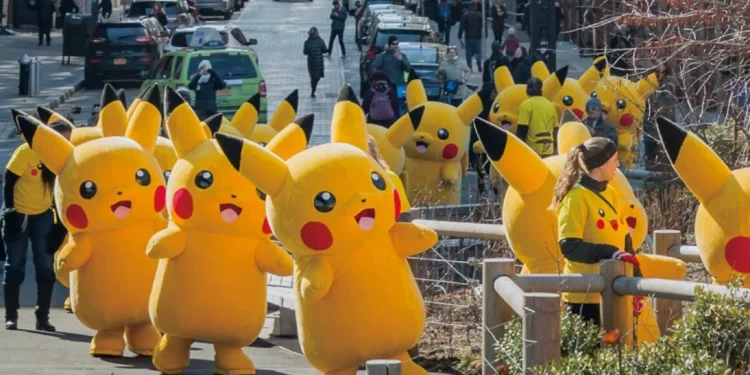No products in the cart.
The Business Of Pokémon: From Japan To The World
How Pokémon Started In Japan
What began in Japan during the 1990s has grown into one of the most powerful and recognizable entertainment franchises in history. The business of Pokémon includes not only games but also animation, trading cards, merchandise, events, and mobile apps. Today, it is a global brand that continues to evolve and expand, while staying connected to its roots.
The Business Of Pokémon: Exploring Its Financial Landscape
Pokémon was created by Satoshi Tajiri, who was inspired by his childhood hobby of collecting insects. With help from Nintendo, Game Freak, and Creatures Inc., the first Pokémon games were released in 1996 on the original Game Boy. These titles, Pokémon Red and Green, introduced players to the concept of capturing, training, and trading creatures known as “pocket monsters,” or Pokémon.
The early success in Japan led to a fast rollout overseas. When Pokémon Red and Blue launched in North America in 1998, they created a phenomenon that went far beyond gaming. The franchise quickly grew into an international brand, bringing with it the start of the business of Pokémon as a serious commercial force.
The Role Of The Anime Series
The Pokémon anime launched in Japan in 1997 and introduced audiences to the character Ash Ketchum and his partner Pikachu. The anime served as both entertainment and a marketing tool, keeping fans engaged between game releases and helping promote new characters.
It was released around the world, reaching millions of households and creating a strong emotional link between viewers and the Pokémon universe. The success of the show played a major part in building brand loyalty, and it continues today with new series that follow different characters and regions.
The Pokémon Company’s Strategy
The Pokémon Company was formed in 1998 as a joint venture between Nintendo, Game Freak, and Creatures Inc. Its main purpose is to manage the brand, coordinate licensing, and oversee product development. This setup allows Pokémon to maintain a consistent identity while expanding across multiple industries.
The business of Pokémon is managed carefully, with a strong focus on quality and branding. Official partnerships with toy makers, apparel brands, food companies, and entertainment platforms have kept the franchise visible in everyday life.

Games As The Core Product
At the heart of the franchise is its mainline game series. From Pokémon Red and Green to more recent titles like Pokémon Scarlet and Violet, the games continue to introduce new regions, creatures, and gameplay systems. Every new generation of games brings excitement to fans while drawing in new players.
Pokémon Go, released in 2016, brought a fresh approach by using augmented reality. Players could find and catch Pokémon in the real world, making the game a cultural event. In Japan, it remains popular, often integrated into citywide events and local tourism promotions.
Cultural Impact In Japan
In Japan, Pokémon has become a cultural icon. Pikachu is used in promotional campaigns, national events, and even public safety messages. There are Pokémon Center retail stores in major cities like Tokyo and Osaka, offering exclusive goods and interactive experiences.
Seasonal items, limited collaborations, and themed events help maintain interest and keep the brand fresh. The business of Pokémon thrives on these physical spaces, which act as hubs for fans and tourists.
Expanding To Global Markets
The franchise has made careful moves to grow internationally. Localization has been key—adjusting language, humor, and cultural details for different countries while preserving the core spirit of the franchise. Today, Pokémon launches are synchronized across the world, showing how well the brand has adapted to a global market.
While it faces competition from other entertainment brands, Pokémon remains strong by staying true to its roots and always offering something new. Regular updates, cross-platform content, and nostalgic callbacks help maintain its wide appeal.
Why Pokémon Continues To Succeed
The business of Pokémon has stayed successful by balancing tradition with innovation. Older fans stay connected through nostalgia, while younger audiences discover the brand through new games and shows. The franchise has also expanded into education, fitness apps, and themed tourism, making it more than just a game or show.
With more than 400 million video games sold and over 50 billion trading cards distributed, Pokémon stands as one of the highest-grossing media franchises in history. It has shown that smart planning, consistency, and creativity can lead to long-term success.
Conclusion
The business of Pokémon is a unique example of how a single idea can grow into a massive global brand. From humble beginnings in Japan to becoming a worldwide icon, Pokémon continues to adapt while holding on to the charm that made it special in the first place. Its future remains bright as it expands into new platforms, technologies, and markets, continuing to inspire fans of all ages around the world.










